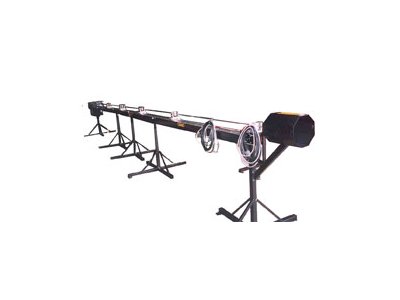11/13/2014
Heat exchangers in industrial settings can become clogged as deposits from the medium flowing through the exchanger tube clusters can build up along the tube sides, causing obstruction. Left uncleansed for a long enough time, the deposit buildup or fouling can cause corrosion of the tubes, reducing the heat exchanger’s efficiency and even causing tube failure.

The type of fouling that occurs in heat exchanger depends on the fluid make-up flowing through the tubes and the conditions of operations. One of the most common forms of fouling is crystallization. Certain salts found frequently in natural water sources have a lower solubility in warm water than cold. When cooling water carries away heart, the dissolved salts crystalize along the tube walls.
Use of fresh water can also cause sedimentation to occur from dirt, sand, rust and other particles that build up in the tubes.
Biological organic growth matter is found in tubes from chemical reactions in the fluid being used. Coking is a chemical reaction that deposits hydrocarbon deposits during a high temperature application. Corrosion, also from a chemical reaction, can cause extensive and costly damage to pipes if left untreated.
There are accommodations a designer can employ with a heat exchanger to reduce fouling, such as maintaining a high level of turbulence to keep sediments from settling and help clean off fouling during operations, but not set the flow velocity so high as to promote erosion. Keeping a uniform velocity of the fluid can keep dead spots at a minimum to prevent accumulation of fouling.
Whatever design features are included in a heat exchanger, you still have to consider how often the exchanger needs to be clean, and allow easy access to make the process easier and efficient.
Jetech offers two models for cleaning heat exchanger tubes. The Jetech model HE-30/40 heat exchanger cleaning system unclogs and cleans tubes and pipes in a semi-automated process. Once the HE-30/40 is set up, the system only needs one operator who can control the rotation of the lances and their in/out motion for cleaning from a remote operator’s station.
The standard unit has one rotating lance, but it can come with optional two, three or four rotating lances. The system is completely air-motor driven and has an effective cleaning length of 25 feet.
Jetech’s model RL-40 Rigid Lance system can come in several configurations to satisfy nearly all production pipe cleaning needs. The basic electric driven models can have a rotating lance or nonrotating when it’s more convenient to turn the tube. The RL-40N non-rotating lance is a perfect solution for rubber and concrete lining removal from pipes. The standard length of the RL-40 is 25 feet.
If you’re installing a new heater exchanger in your plant, or you need to upgrade from the heat exchanger system you currently have, contact Jetech for more information on how our cleaning systems can keep your heat exchangers running smoothly and efficiently.

